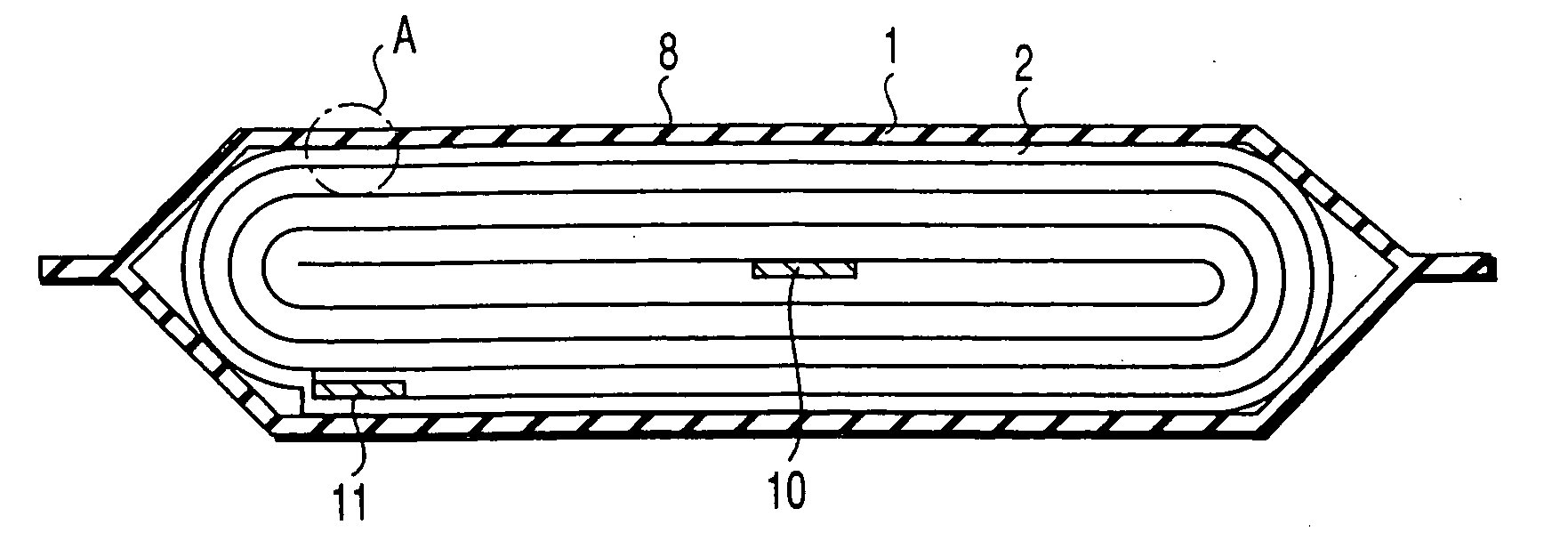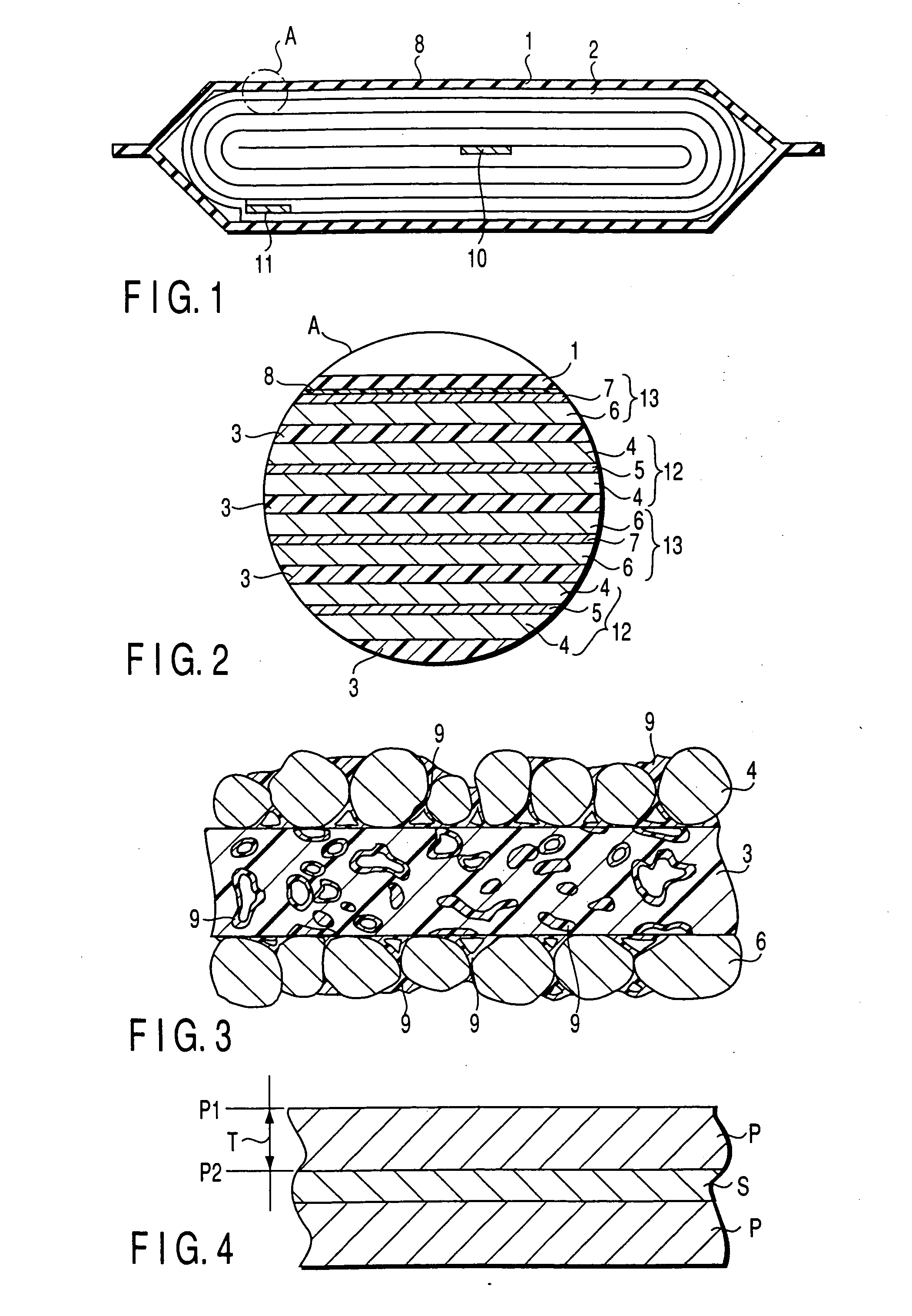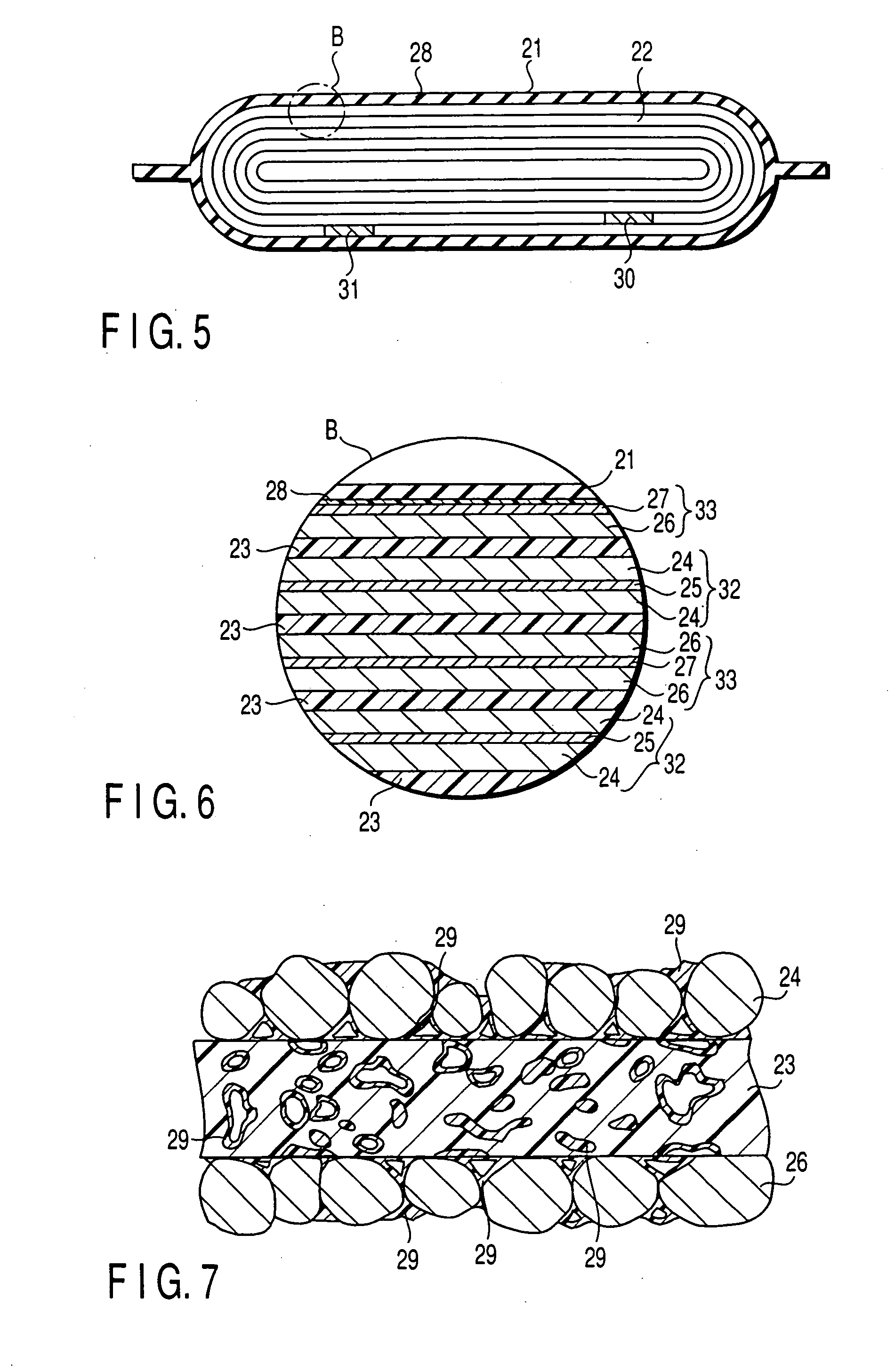Nonaqueous electrolyte secondary battery
a secondary battery and electrolyte technology, applied in the direction of non-aqueous electrolyte cells, wound/folded electrode electrodes, sustainable manufacturing/processing, etc., can solve the problems of electronic equipment malfunctions and inability to house electronic equipment in the battery, and achieve the effect of improving the large discharge characteristics and charge-discharge cycle li
- Summary
- Abstract
- Description
- Claims
- Application Information
AI Technical Summary
Benefits of technology
Problems solved by technology
Method used
Image
Examples
example 1
[0235] First, 91 wt % of a lithium cobalt oxide (LiXCoO2: 0≦X≦1) powder, 3.5 wt % of acetylene black, 3.5 wt % of graphite, 2 wt % of an ethylenepropylenediene monomer (EPDM) powder as a binder, and toluene were mixed. The two surfaces of a collector made of a porous aluminum foil (15 μm thick) having 0.5 mm diameter pores at a ratio of 10 pores per 10 cm2 were coated with the resultant mixture. This collector was pressed to manufacture a positive electrode having an electrode density of 3 g / cm3 in which positive electrode layers were carried by the two surfaces of the collector.
[0236] 93 wt % of a powder of mesophase pitch-based carbon fibers heat-treated at 3,000° C. (fiber diameter=8 μm, average fiber length=20 μm, and average interplanar spacing (d002)=0.3360 nm) as a carbon material and 7 wt % of polyvinylidene fluoride (PVdF) as a binder were mixed. A collector made of a porous copper foil (15 μm thick) having 0.5 mm diameter pores at a ratio of 10 pores per 10 cm2 was coated...
examples 2 to 7
[0246] A thin nonaqueous electrolyte secondary battery was obtained as in Example 1, except that the composition of the solvent for the electrolyte was changed as shown in Table 1, so as to evaluate the battery. The electrolyte composition, the initial charging conditions, and the battery characteristics for each of these Examples are shown in Table 1.
example 8
[0247] A thin nonaqueous electrolyte secondary battery was obtained as in Example 1, except that an aluminum can having a thickness of 0.2 mm was used as the jacket, an adhesive polymer was not used, and that the secondary battery was sized at 3.2 mm in thickness, 40 mm in width and 70 mm in height, so as to evaluate the secondary battery. The electrolyte composition, the initial charging conditions, and the battery characteristics for Example 8 are also shown in Table 1.
PUM
| Property | Measurement | Unit |
|---|---|---|
| thickness | aaaaa | aaaaa |
| thickness | aaaaa | aaaaa |
| thickness | aaaaa | aaaaa |
Abstract
Description
Claims
Application Information
 Login to View More
Login to View More - R&D
- Intellectual Property
- Life Sciences
- Materials
- Tech Scout
- Unparalleled Data Quality
- Higher Quality Content
- 60% Fewer Hallucinations
Browse by: Latest US Patents, China's latest patents, Technical Efficacy Thesaurus, Application Domain, Technology Topic, Popular Technical Reports.
© 2025 PatSnap. All rights reserved.Legal|Privacy policy|Modern Slavery Act Transparency Statement|Sitemap|About US| Contact US: help@patsnap.com



